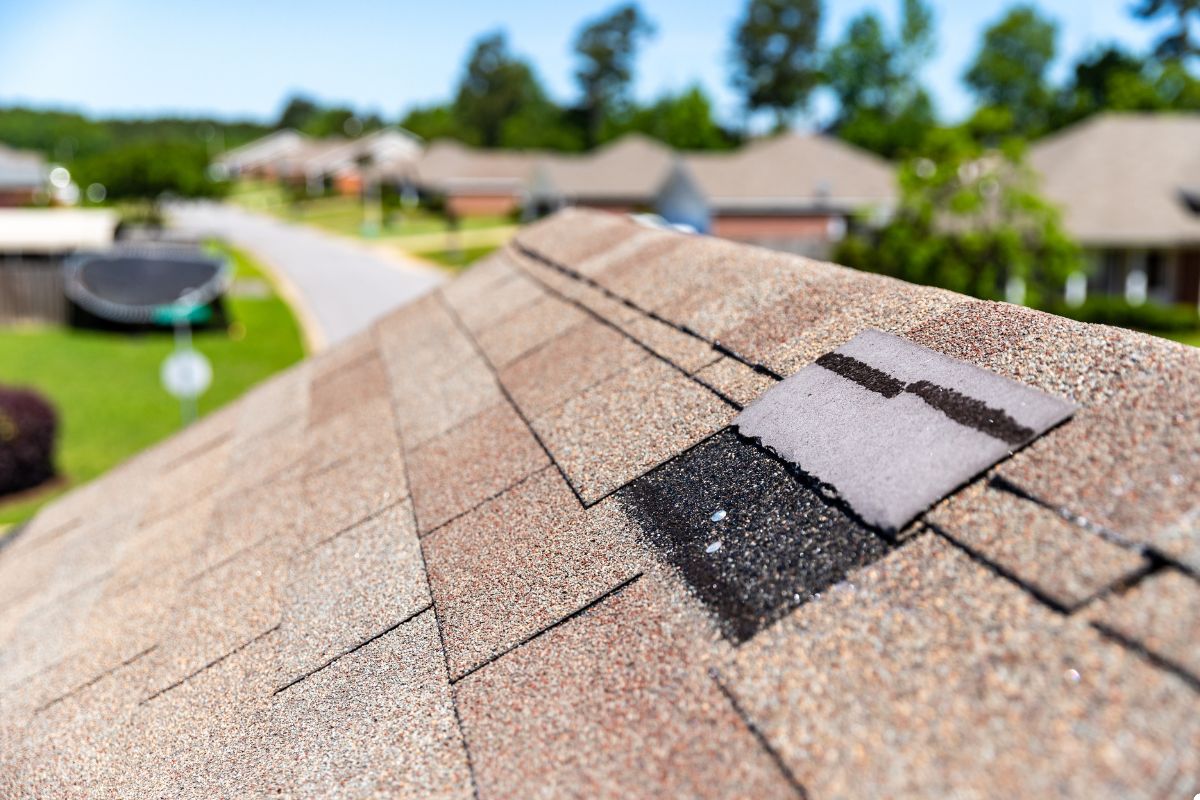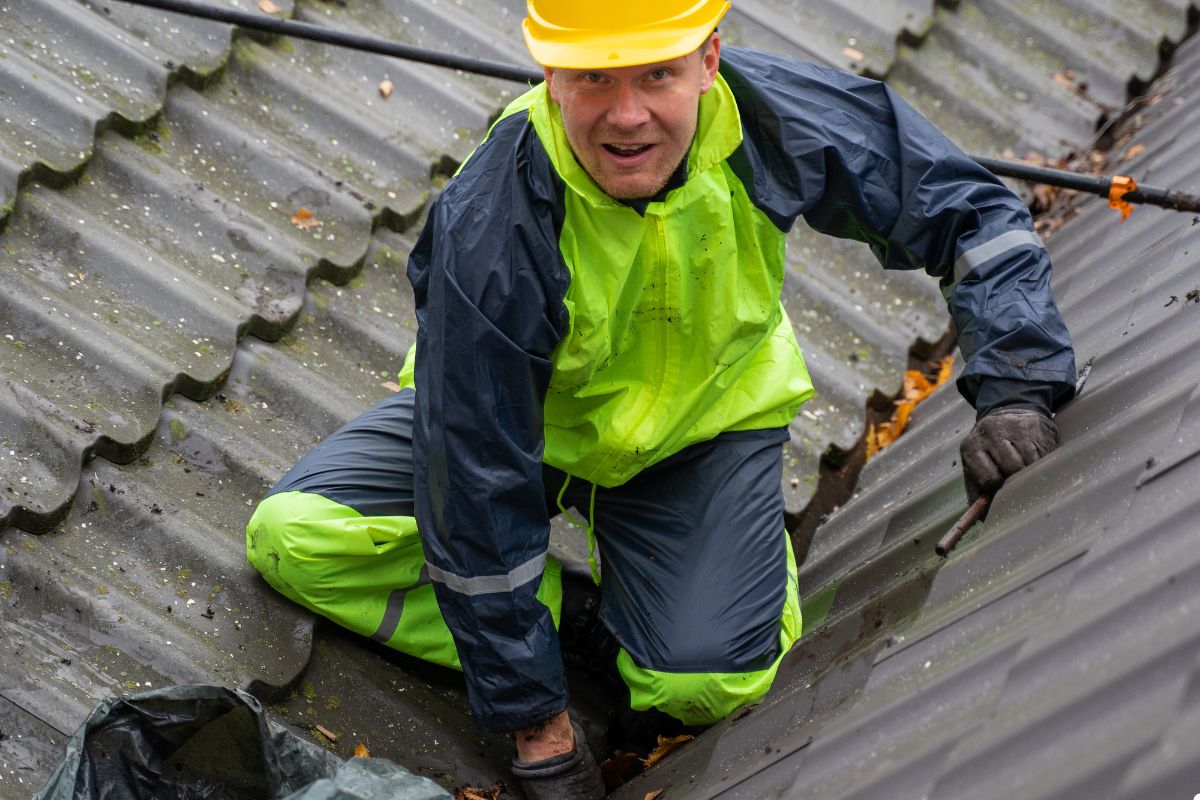
The truth is, many homeowners don’t think about their roof until there’s a major problem like a leak. However, regularly checking your roof for signs of wear and tear can save you thousands of dollars in the long run. The key signs can often be spotted inside your home and through a ground level inspection. If you notice any of these signs or have concerns about the condition of your roof, it’s time to Call Us for a professional inspection.
Why Roof Maintenance Matters
Your roof is your home’s first line of defense against the elements – rain, snow, wind, and sun. Neglecting roof maintenance can lead to a variety of problems, from minor leaks to major structural damage. Regular maintenance extends the life of your roof, prevents costly repairs, and protects your home and belongings. Common problems that arise from lack of maintenance include leaks, damaged shingles, and wood rot.
Signs of Roof Problems Inside Your Home
One of the easiest ways to identify roof problems is by looking for clues inside your home. Common interior signs include water stains on ceilings and walls, musty odors, and damaged attic insulation.

Water Stains on Ceilings and Walls
Water stains are a clear indication that water is entering your home through the roof. These stains often appear as discolored patches on ceilings or walls and can be accompanied by peeling paint or bubbling drywall. Regular maintenance is crucial for all types of roofs, as even minor damage can lead to water intrusion and interior stains. Understanding the source of the stains will help determine the severity of the problem.
Musty Odors and Mold Growth
A persistent musty odor, especially in the attic or upper levels of your home, can indicate a roof leak that’s fostering mold and mildew growth. Mold can not only damage your home’s structure but also pose health risks to your family. Good ventilation can help prevent these issues.
Damaged Attic Insulation
Roof leaks can saturate your attic insulation, reducing its effectiveness and leading to higher energy bills. Wet insulation can also become a breeding ground for mold and mildew. Replacing damaged insulation is crucial for maintaining energy efficiency.
Visual Clues From the Ground Level
You can often spot potential roof problems from the ground using binoculars. This allows you to safely inspect your roof without climbing onto it. Remember never climb on your roof unless you are a trained professional.
Missing or Damaged Shingles
Look for shingles that are missing, cracked, curled, or blistered. Damaged shingles expose the underlayment of your roof, making it vulnerable to water damage.
Granules in Gutters
An excessive amount of shingle granules in your gutters is a sign that your shingles are deteriorating and losing their protective coating. This is a natural part of the aging process, but it can accelerate roof wear.
Sagging Roofline
A sagging roofline indicates structural problems that require immediate attention. This could be due to water damage, rotting wood, or inadequate support.
Damaged Flashing
Flashing is the metal material installed around chimneys, vents, and other roof penetrations to prevent water from seeping in. Check for damaged, rusted, or missing flashing.
When to Call a Roofing Professional
While you can identify some roof problems yourself, it’s important to call a roofing professional for a thorough inspection, especially if you notice signs of extensive damage, experience severe weather events, or are buying or selling a home.
Signs of Extensive Damage
If you notice signs of significant damage, such as a sagging roofline, large leaks, or widespread shingle damage, it’s best to call a professional. Attempting to repair extensive damage yourself can be dangerous and may void your roof’s warranty.
After Severe Weather Events
Hail, strong winds, and heavy rain can cause hidden damage to your roof. A professional inspection can identify damage that may not be visible from the ground.
Before Buying or Selling a Home
A roof inspection is an essential part of the home buying or selling process. It can help identify potential problems and provide valuable information about the roof’s condition and remaining lifespan.

Proactive Steps for a Healthy Roof
Preventive roof maintenance is key to extending the life of your roof and avoiding costly repairs. Simple steps like regular gutter cleaning, trimming overhanging trees, and moss removal can make a big difference.
Regular Gutter Cleaning
Clogged gutters can cause water to back up under your roof, leading to leaks and wood rot. Clean your gutters at least twice a year to ensure proper drainage.
Trim Overhanging Trees
Overhanging trees can drop leaves and debris onto your roof, trapping moisture and promoting mold growth. Trim branches to keep them away from your roof.
Moss and Algae Removal
Moss and algae can trap moisture and damage your shingles. Remove moss and algae with a brush or a specialized cleaning solution.
Protecting Your Investment: A Final Word on Roof Maintenance
Your roof is a crucial investment in your home’s protection and value. By regularly inspecting your roof, addressing minor problems promptly, and following a proactive maintenance plan, you can extend its lifespan, prevent costly repairs, and ensure the safety and comfort of your home. Protect your home with regular roof maintenance—don’t wait for costly repairs! Contact us today for a professional inspection and peace of mind.
Frequently Asked Questions About Roof Maintenance
How often should I have my roof inspected?
Ideally, you should have your roof inspected at least once a year, preferably in the spring or fall. It’s also a good idea to inspect your roof after severe weather events.
What are the most common causes of roof leaks?
The most common causes of roof leaks include damaged shingles, faulty flashing, clogged gutters, and ice dams.
How much does a roof inspection cost?
The cost of a roof inspection can vary depending on the size and complexity of your roof, as well as the location and reputation of the roofing contractor.
Can I repair my roof myself, or should I hire a professional?
Simple repairs, such as replacing a few damaged shingles, may be DIY-friendly. However, for more complex repairs or if you’re uncomfortable working on your roof, it’s best to hire a professional.
How long does a typical roof last?
The lifespan of a roof depends on the materials used and the climate in your area. Asphalt shingle roofs typically last 20-30 years, while tile roofs can last 50 years or more. For expert roofing services and inspections, call us today!
